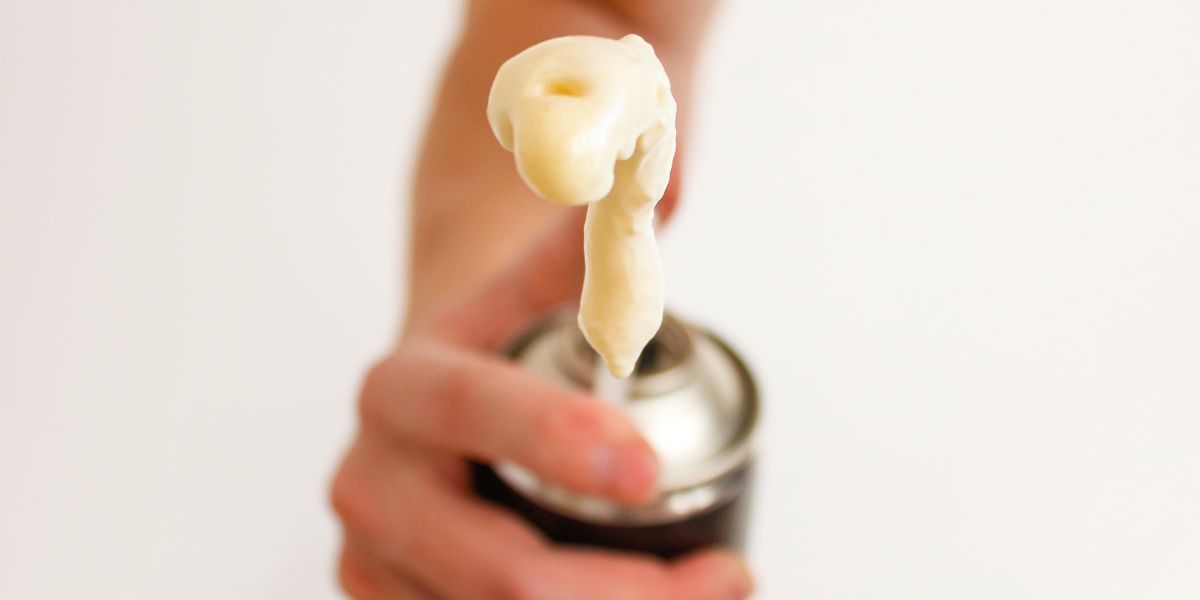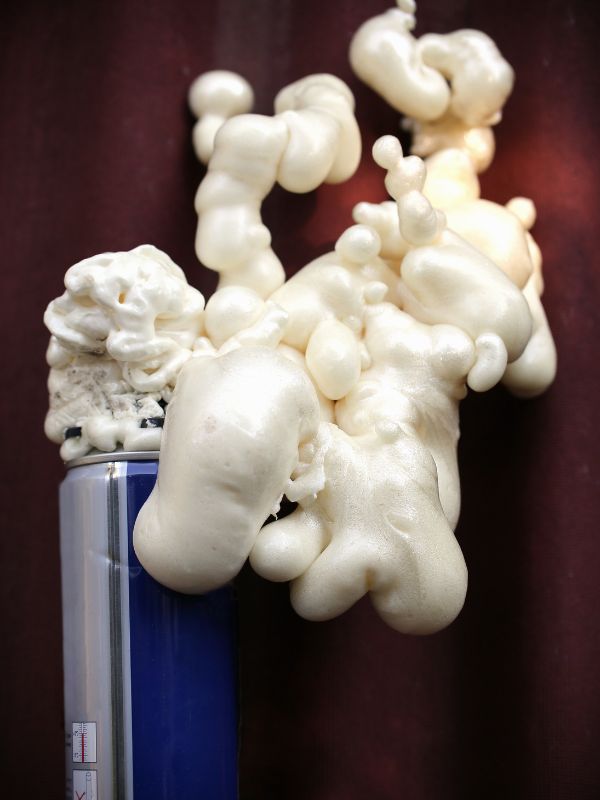Even though inflatables are meant to be filled with air, it’s not your only option. You could, in theory, fill inflatables with various different substances, depending on what you wanted to use them for. One of those is expanding foam.

But there are many reasons why most inflatables are still inflated using air instead of foam or some other product. Expanding foam has a couple of pros, sure, but a much longer list of downsides.
Let’s take a look at how expanding foam works, why you might consider using it for an inflatable, and how to do so if you want to.
How do you use expanding foam?
To use expanding foam, all you need to do is spray the foam into the inflatable that you want to use it in. You need to make sure you fill the inflatable in every cavity – once the foam expands and hardens it will be impossible to reach into missed areas.
As its name suggests, expanding foam has expanding properties. It’s normally used to seal gaps in homes or as insulation in wall cavities.
It has polyurethane components that react when they come into contact with air, causing the liquid within the foam to expand.
The foam will come in a pressurized can, with a straw to make it easy to spray through gaps and into tight areas.
Take a look at this YouTube video that shows how to use expanding foam.
How much does expanding foam expand?
Expanding foam comes in different variants. Typically, low-expanding foam will expand to around 30x its original liquid volume (how it is stored in the can). High-expansion foam can expand much further, up to around 300x the liquid volume.
Bear in mind that we’re talking about the volume of the foam when it is inside the can. As soon as you start spraying it, it will already be reacting and expanding in the air, even if it’s got a lot more expanding still to do.
So if you want to fill an inflatable, you should look at the volume of the inflatable you want to fill, divide that by 30, and that’ll tell you how many cans you need.
Of course, most of the time we don’t know the volume of an inflatable, which is where it gets tricky. It’s not something you can just work out for yourself, because there are different pockets in different shapes. If it’s not published in the manual then you may have to resort to estimation.

Advantages of filling an inflatable with expanding foam
Expanding foam will fill inflatables quickly, and provide a more solid volume inside once it hardens – this can help to protect your inflatable from punctures. It’s also more insulating than air, which could be good for hot tubs.
While expanding foam may not be the best alternative to air pressure when it comes to inflatables, it has some advantages.
It has impressive expanding properties that will fill your inflatable in a short time. It’ll normally take around 5-10 minutes to fully expand, although it may need more time to dry out – often up to an hour.
Once it dries out, the foam will harden, which can help to keep your inflatable sturdy. It also means that, if you get a puncture, the inflatable isn’t going to deflate. The foam acts as a solid structure, keeping it upright.
Expanding foam is buoyant, and so in theory could be used in inflatable rafts too.
And it’s heat-insulating, which can help you save energy with an inflatable hot tub since it keeps the heat within the water more.
Disadvantages to using expanding foam for your inflatables
The disadvantages of using expanding foam in inflatables normally make it an unwise choice. It is heavy, it prevents you from ever deflating your inflatable without specialist chemicals, and if you do get a puncture it will absorb water and lose buoyancy.
While it has upsides, expanding foam comes with disadvantages too.
The most obvious is that it turns your inflatable from a temporary item into a permanent one. You can’t just remove foam from your inflatables when you want to pack them away and store them.
And most inflatables are designed in that way – to be inflated and deflated as necessary.
You can dissolve expanding foam using acetone. But that means you’re left with a mix of liquid foam and acetone inside your inflatable, which you may not be able to get out depending on the valve. You might have to create a puncture, and then repair it once it is emptied and dried.
Foam is heavy too. If you like being able to move your inflatables around once they are inflated, be prepared for that to be more difficult when you use foam instead.
Another drawback is that foam, even once dried, is absorbant. And if you do get it wet, it will become extremely heavy.
This is a massive problem for anyone who wanted to use foam to fill an inflatable raft. One puncture and you suddenly have sodden, dense foam that won’t float. It also can damage a hot tub, although it’s not as bad an issue since your hot tub doesn’t need to be buoyant.
Even using expanding foam in the first place is difficult, because once it dries it is very hard to move. This means that, if you don’t completely fill your inflatable first-time, then you’re going to end up with soft patches where the foam hasn’t expanded, and the valve may be sealed shut.
The only way around this would be to make a small puncture where the inflatable has not been properly inflated, add more foam, and then patch the inflatable.
Finally, expanding foam is not cheap. So you’re paying for the privilege of having all these drawbacks.
It really doesn’t make sense in most scenarios.

Can you use expanding foam to fill an inflatable hot tub?
You could use expanding foam to fill an inflatable hot tub. It would be a better insulator of the hot water, but it also causes problems if you don’t fill the hot tub’s sides sufficiently with foam, and it also means you can’t deflate your hot tub when you’re not using it.
It’s best to stick to using air. The advantages of using foam for an inflatable hot tub are far outweighed by the drawbacks.
Final Words
Yes, using expanding foam to fill inflatables is possible.
But just because something is possible, doesn’t mean it’s a good idea.
There are too many reasons why expanding foam makes a bad choice for inflatables, and the benefits just aren’t strong enough.
